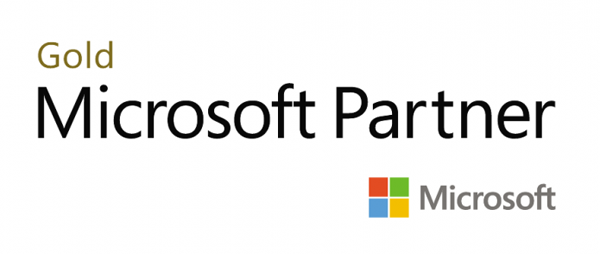Informationstechnologien & IT-Sicherheit
Securing Windows Server 2016 (MOC20744)
- Seminar
- Präsenz / Virtual Classroom
- Zurzeit keine Termine
- 40 Unterrichtseinheiten
- Teilnahmebescheinigung
Seminarnummer: 29454
Sicherheit in Serverbetriebssystemen ist ein absolutes Muss.
Dieser fünftägige Kurs vermittelt IT-Experten, wie sie die Sicherheit der von ihnen verwalteten IT-Infrastruktur mit Windows Server Technologien optimieren können. Zu Beginn wird hervorgehoben, wie wichtig es ist, davon auszugehen, dass es vielleicht bereits zu Sicherheitsverletzungen im Netzwerk gekommen ist.
Letzte Durchführung Anfang April. Ggf. auf AZ-801 und/oder SC-300 ausweichen.
Letzte Durchführung Anfang April. Ggf. auf AZ-801 und/oder SC-300 ausweichen.
Nutzen
This course also details how you can mitigate malware threats, identify security issues by using auditing and the Advanced Threat Analysis feature in Windows Server 2016, secure your virtualization platform, and use new deployment options, such as Nano server and containers to enhance security. The course also explains how you can help protect access to files by using encryption and dynamic access control, and how you can enhance your networks security.
After completing this course, students will be able to:
After completing this course, students will be able to:
- Secure Windows Server.
- Secure application development and a server workload infrastructure.
- Manage security baselines.
- Configure and manage just enough and just-in-time (JIT) administration.
- Manage data security.
- Configure Windows Firewall and a software-defined distributed firewall.
- Secure network traffic.
- Secure your virtualization infrastructure.
- Manage malware and threats.
- Configure advanced auditing.
- Manage software updates.
- Manage threats by using Advanced Threat Analytics (ATA) and Microsoft Operations Management Suite (OMS).
Zielgruppe
This course is for IT professionals who need to administer Windows Server 2016 networks securely. These professionals typically work with networks that are configured as Windows Server domain-based environments, with managed access to the Internet and cloud services.
Anforderungen
Students should have at least two years of experience in the IT field and should have:
- Completed courses MOC20740, MOC20741, and MOC20742, or the equivalent like the Upgrade course MOC20743.
- A solid, practical understanding of networking fundamentals, including TCP/IP, User Datagram Protocol (UDP), and Domain Name System (DNS).
- A solid, practical understanding of Active Directory Domain Services (AD DS) principles.
- A solid, practical understanding of Microsoft Hyper-V virtualization fundamentals.
- An understanding of Windows Server security principles.
Inhalte
Module 1: Breach detection and using the Sysinternals tools
In this module, students will learn about breach detection, attack types and vectors, cybercrime, and how you can analyse your systems activity by using the Sysinternals tool suite.
Lessons
Lessons
Lessons
Lessons
Lessons
Lessons
Lessons
Lessons
Lessons
Lessons
Lessons
Lessons
This module explains how to secure network traffic and how to use Microsoft Message Analyzer, Server Message Block (SMB) encryption, and Domain Name System Security Extensions (DNSSEC).
Lessons
Lessons
Lessons
- Overview of breach detection
- Using the Sysinternals tools to detect breaches
Lessons
- Understanding user rights
- Computer and service accounts
- Protecting credentials
- Understanding privileged-access workstations and jump servers
- Deploying a local administrator-password solution
Lessons
- Understanding JEA
- Configuring and deploying JEA
Lessons
- Understanding ESAE forests
- Overview of MIM
- Implementing JIT and Privileged Access Management by using MIM
Lessons
- Configuring and managing Windows Defender
- Using software restricting policies (SRPs) and AppLocker
- Configuring and using Device Guard
- Using and deploying the Enhanced Mitigation Experience Toolkit
Lessons
- Overview of auditing
- Understanding advanced auditing
- Configuring Windows PowerShell auditing and logging
Lessons
- Overview of Advanced Threat Analytics
- Understanding OMS
- Using ATA and OMS
- Preparing and deploying ATA
- Preparing and deploying OMS
Lessons
- Overview of Guarded Fabric VMs
- Understanding shielded and encryption-supported VMs
- Deploying Guarded Fabric VMs with administrator-trusted attestation
- Deploying a shielded VM
Lessons
- Using Security Compliance Manager
- Introduction to Nano Server
- Understanding containers
- Configuring a security baseline for Windows Server 2016
- Deploying a security baseline for Windows Server 2016
- Deploying, managing, and securing Nano Server
- Deploying, managing, and securing Windows Server containers
- Deploying, managing, and securing Hyper-V containers
Lessons
- Planning and implementing encryption
- Planning and implementing BitLocker
- Encrypting and recovering access to encrypted files
- Using BitLocker to protect data
Lessons
- Introduction to FSRM
- Implementing classification management and file-management tasks
- Understanding Dynamic Access Control (DAC)
Lessons
- Understanding Windows Firewall
- Software-defined distributed firewalls
- Creating and testing inbound rules
- Creating and testing outbound rules
This module explains how to secure network traffic and how to use Microsoft Message Analyzer, Server Message Block (SMB) encryption, and Domain Name System Security Extensions (DNSSEC).
Lessons
- Network-related security threats and connection-security rules
- Configuring advanced DNS settings
- Examining network traffic with Microsoft Message Analyzer
- Securing SMB traffic, and analysing SMB traffic
Lessons
- Overview of WSUS
- Deploying updates by using WSUS
- Implementing the WSUS server role
- Configuring update settings
- Approving and deploying an update by using WSUS
- Deploying Windows Defender definition updates by using WSUS
Hinweise
Dieses Seminar wird mit deutschen Unterlagen und Übungsumgebungen durchgeführt.
Letzte Durchführung Anfang April. Ggf. auf AZ-801 und/oder SC-300 ausweichen!
Letzte Durchführung Anfang April. Ggf. auf AZ-801 und/oder SC-300 ausweichen!

